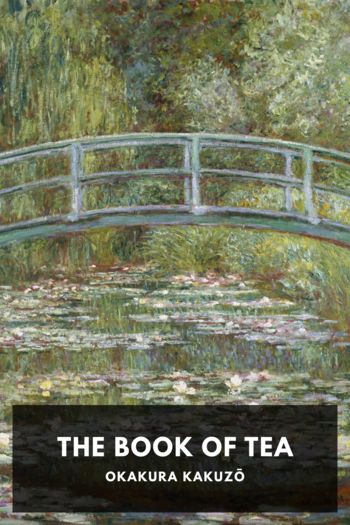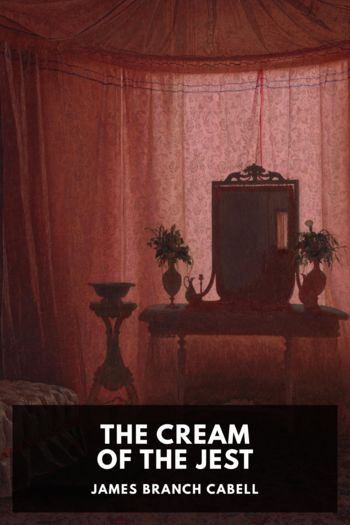Chocolate Sarah Moss (best fantasy books to read .txt) 📖

- Author: Sarah Moss
Book online «Chocolate Sarah Moss (best fantasy books to read .txt) 📖». Author Sarah Moss
Fantasies of upper-class romance: Rowntree’s Black Magic chocolates advert from 1937.
After Eight chocolates advertisement.
One of the most common motifs in chocolate advertisement is the woman on the sofa, enjoying the solitary pleasureof chocolate, such as in a recent ad by Côte d’Or. The woman lies supine on the couch, sharing neither couch nor chocolate nor fantasy, her book draped below waist level to suggest which part of her it appeals to, where the shadow of the Côte d’Or elephant also falls. In some ways, these women can be read as direct descendents of the women portrayed in the eighteenth century, languidly sipping chocolate in their boudoirs while consuming similarly questionable fiction. Unlike her counterpart of three centuries ago, for whom chocolate was evidence of a general state of luxury, the present-day woman on the sofa seems to be transforming her domestic surroundings into something luxurious and decadent, and/or escaping from them entirely by eating chocolate. Worryingly, a woman being idle in the domestic sphere still seems vaguely decadent. Over and above this, however, it is notable how ideas of ‘good’ chocolate’s ‘darkness’, luxury and exoticism are still present here. The difference is that here it is a bodily indulgence, something that satisfies a bodily urge rather than an aesthetic quest.
Because chocolate often represents women’s sexuality, it also appears in popular culture as a replacement for sex. Thanks to the wonder of the internet, and friends who forward such messages, most of us are by now probably familiar with at least ten reasons why chocolate is better than men, or better than sex (they seem to amount to roughly the same thing). Most of the reasons have little to do with any quality of chocolate beyond the fact that it tastes good and is inanimate, thus lacking any will or desire of its own. Essentially, such lists trot out a series of clichés about the relative amounts of pleasure men and women experience in heterosexual sex. Chocolate rates in particular as a superior oral pleasure. In seeming confirmation of these pieces of folk wisdom, a 2007 study – sponsored by food manufacturers and using a newbrand of dark chocolate as test object – found that chocolate was more physically stimulating than kissing one’s partner passionately. Without dismissing the scientific value of the results (though it is questionable which science is their main beneficiary), the fact that the study was conducted at all says much about the place of chocolate in our lives and how we relate it to sex and bodily pleasure.
Return of the Catholic connection? Chocolat, 2000.
Popular portrayals of chocolate consumption are not merely about liberation and women taking charge of their own pleasure, but also quite clearly about transgressive, sinful pleasures. Writing and adverts for chocolate are filled with words such as ‘sin’, ‘temptation’ and ‘wickedness’. In this regard, it seems that chocolate’s associations with Catholicism have returned in full force, but with new meaning, as in the French Suchard ad that stated simply: ‘It is a test sent to us by the Lord.’ The recent film Chocolat, based on the novel of the same name by Joanne Harris, also brings chocolate and Catholicism into the same frame, but as polar opposites rather than the close associates they had been in past times. In the film, chocolate does not appear as part of the cycle of sin, confessionand reconciliation (and renewed sinning), but instead the church attempts to stamp out chocolate altogether as a sensual pleasure – an attitude largely associated in our world with Protestantism. Most blatant is ice cream manufacturer Wall’s ‘7 Deadly Sins’ line of Magnum ice cream bars, which are, again, marketed entirely to women. Besides ‘lust’, which is made up of pink ‘strawberry flavoured chocolate’, the fold also includes a dark chocolate ‘gluttony’ and a predictably green (pistachio) ‘jealousy’. But in the adverts for the Magnum bars, as in much chocolate advertising, the idea is not so much that sex is sin, but more generally that sinning is sexy. The ‘sin’, to the extent it is identified at all, is indulging in a sensual pleasure that might make one fat – though one would never know it from the women in the adverts. In this light, the ‘Be Treatwise’ campaign’s suggested 30 minutes of exercise per treat also smacks distinctly of doing penance.
It must be said that for all they talk about sex, sin and exoticism, adverts for chocolate are ultimately tame in their suggestions. Quite apart from the fact that they sell a ‘forbidden fruit’ that is available cheaply anywhere, they are generally ‘vanilla’ in their sexual flavourings, and if anything seem to be struggling to keep up with even the mainstream values and experiences of chocolate consumers. Given the generally widespread visibility of gay characters in popular culture, for example, they do not seem to register on the chocolate horizon (an exception is the Magic Fairy bar –‘one poof and it’s all gone’– by Bloomsberry). Chocolate instead appears as a way of practicing safe sin. Especially with their emphasis on chocolate as an escapist pleasure, the message of a number





Comments (0)